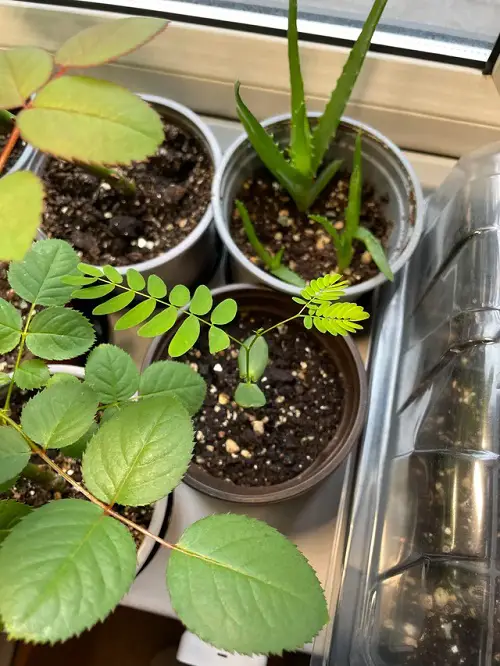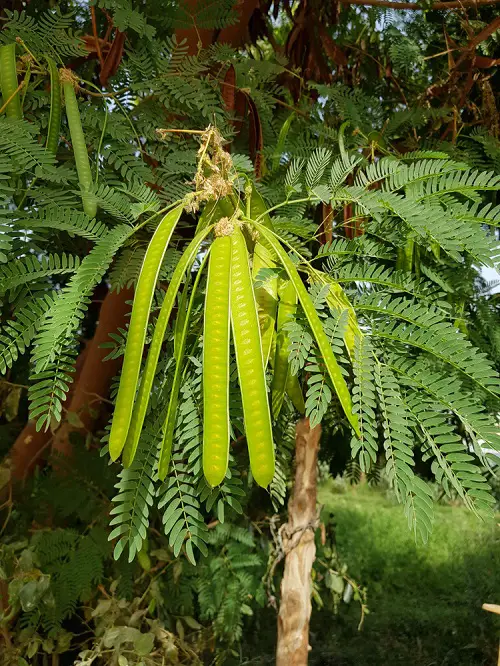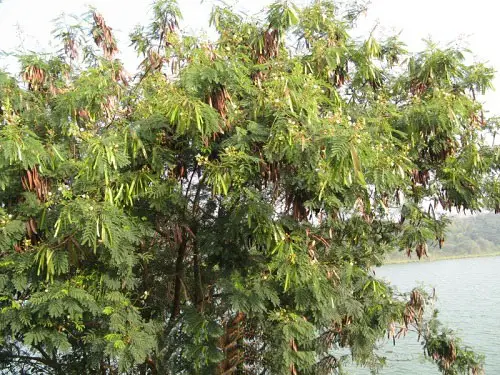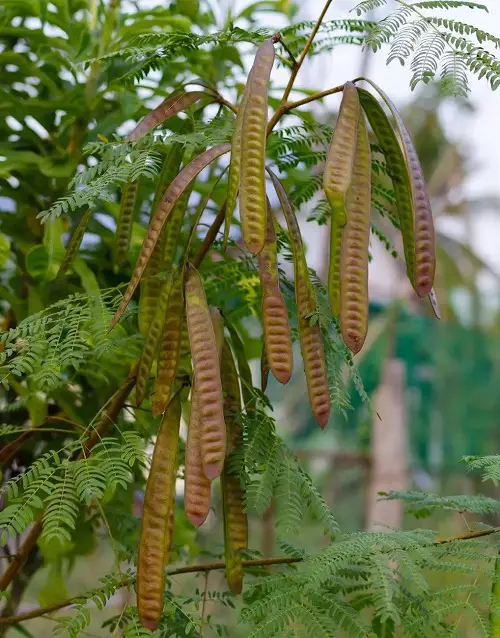If you don’t know How to Grow River Tamarind, this post is for you. We’ve created a comprehensive guide!
If you want a lush plant in your garden that stays green and dense all year round, well, growing a River Tamarind tree is a great choice!
Botanical Name: Leucaena leucocephala
Common Names: Pearl Wattle, Jumbay, White Leadtree, White Popinac, Ipil-ipil, and Tan-tan.
What is River Tamarind?
River Tamarinds are part of the Fabaceae family and share genes with legumes or the pea family. They’re native to Central and South America and are medium-sized trees. They can easily reach 60-65 feet in height, but the ones you see in gardens are smaller, growing 15-20 feet.
The bark of these trees is a lovely shade of light gray or brown. But they’re best known for their fluffy white flower clusters, which look like powder puffs.
What’s more is that River Tamarind is a nitrogen-fixing plant that can enrich the soil around it by forming a symbiotic relationship with bacteria. This is what makes it valuable for soil improvement and ecological restoration.
Propagating River Tamarind

There are two ways to propagate these plants. The first one involves getting the seeds, planting them, caring for them, and growing them into lush trees. But this will take a lot of time, so we recommend making the smart move and getting a plant cutting from a local nursery.
Take a 6-8 inch cutting, remove the leaves in the lower half, and dip the bottom half in honey or aloe (they’re great rooting hormones). Get a small pot with well-draining soil, make a small hole in it, and plant the cutting inside.
Place this pot in a bright area with indirect sunlight and water it occasionally. In about 4-5 weeks, it will root and start growing new leaves.
Best Pot for River Tamarind
River Tamarinds have the potential to grow into medium-sized trees so you’ll need a big pot for sure. Start with one that’s at least 1-1.5 feet wide.
Over time, as your plant grows, you’ll need to transplant it to larger containers; otherwise, you can just plant it in the garden and get rid of the hassle.
Requirements for Growing River Tamarind

Sunlight
These plants need full sun to partial shade, so make sure you keep them where they can get 6-8 hours of direct sunlight every day. But the area shouldn’t be too windy.
Soil
The plant prefers well-draining soil with a slightly acidic to neutral pH. It should also be fertile, enriched with organic matter, and capable of retaining some moisture without becoming waterlogged. Mix these up to check all the boxes.
- 2 parts potting soil for base
- 1 part perlite or sand for aeration and drainage
- A handful of compost or manure for nutrients
Water
These trees are drought-tolerant, but that doesn’t mean you should skip watering entirely. It’s crucial when the plant is establishing itself to water it regularly and keep it evenly moist. Only water again when the top inch of the soil is dry to touch.
Temperature
River Tamarinds need warm temperatures between 68°F to 86°F (20°C to 30°C) and a moderately humid environment.
If possible, you should maintain a humidity level of around 40-60%, especially if you are growing it indoors. These trees are not frost tolerant, so keep an eye out for freezing temperatures and take care of them.
River Tamarind Care
Fertilizer
These trees need regular fertilizer to support their size. Choose a slow-release fertilizer with an NPK ratio of 6-6-3 or 10-10-10. Dilute it to half its strength and feed it only during the growing season. Once in 2-3 months is enough.
Once the tree matures, feeding it once a year will be enough.
Tip: Don’t overfertilize your River Tamarinds, as this will lead to excessive vegetative growth, which will produce fewer fruits and flowers.
Pruning
Pruning is a great practice for better growth. Just before the growing season, grab sharp pruning scissors and get rid of all the dead wood.
Pest and Diseases
The plant is generally resilient against pests and diseases. However, sometimes, aphids, mealybugs, and scale insects might occur. Just remove these by hand or make a neem oil spray if the infestation is too much.






